Cast the first stone anyone who has never kneaded (at least their first time ever ...) with the
penem canis , unloading a whole 25 grams cube of brewer's yeast in half a kilo of flour, as if he had had to leaven the bowl too ... And after a couple of hours (miracle!) find yourself munching with difficulty on the biscuity or chewy result wondering why he didn't even remotely remember a pizza ...
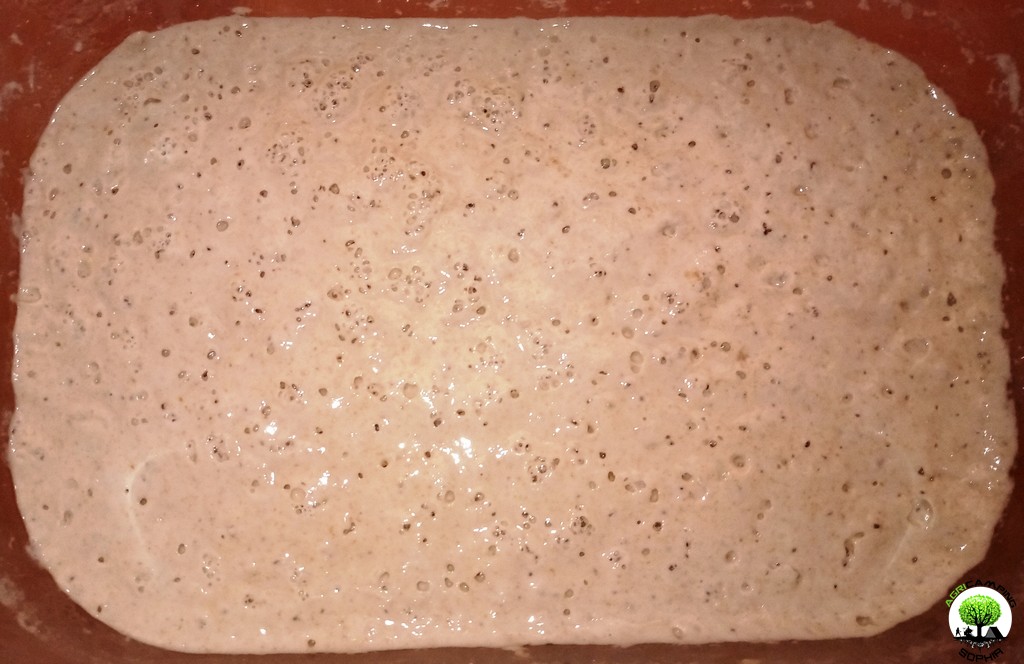
The "problem" is that, as already more fully explained regarding the phantom
autolysis , if leavening occurs more quickly than
protein synthesis , that dough loses edibility and becomes more suitable for alternative uses, for example as glue ...
leavening is not the only chemical and microbiological process that takes place in a dough but it is certainly among the most important. And if on the threshold of the "second phase" of the
lockdown because of the covid-19, it is even easier to find the famous needle in the haystack (to then pass a camel in its eye) than the yeast of fresh beer in the fridge department of a supermarket I did this: flour, water (60% of the flour), a crumb of brewer's yeast that I had frozen for some time and many greetings to the moms-sandwiches who hoarded tons of brewer's yeast. Basically I'm growing the
saccharomyces cerevisiae in a sort of sourdough, which here in Sicily came from the grandparents called
criscenti . It works, but it's not the
mother yeast . Or maybe yes?
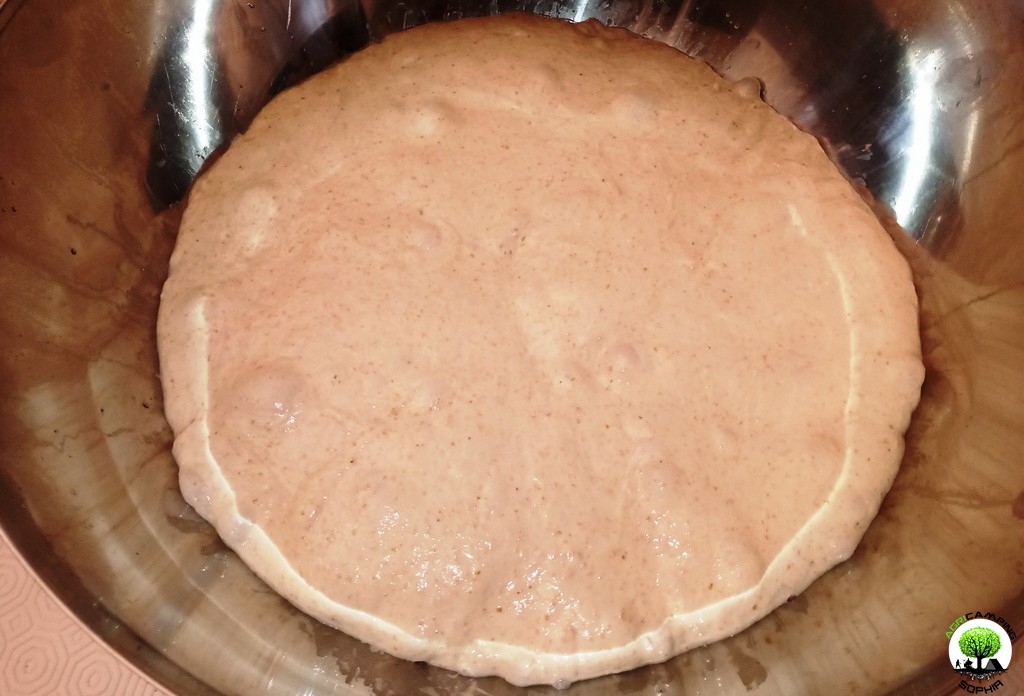 What is mother yeast?
What is mother yeast?
Theoretically it is a mixture of water and flour contaminated "spontaneously" by the endogenous yeasts of the flour. In fact, the environment in which you "work" (including laborious hands) involuntarily brings exogenous yeasts. Each refreshment (i.e. the addition of nutrients, in this case water and flour, generally to restore the original quantity) introduces unpredictable variables in the dough, promoting or disadvantaging the survival of certain species of yeasts and bacteria. Given the hectic metabolic activity of those who live in it, growing mother yeast makes sense if you plan to use it regularly (for example, at least a couple of times a week).
The role of yeasts
Yeasts are fungi (
phylum ascomycota ) which, between 4 and 45 degrees Celsius (more rapidly between 20 and 30 degrees), initiate metabolic processes (i.e. they eat, reproduce and die). The fact that the
saccharomyces cerevisiae (i.e. the very common beer yeast) is able to duplicate itself no earlier than an hour and a half from the start of the metabolic activity, makes those recipes in which times are maintained implausible leavening time under an hour and a half ...
The metabolizing action of the yeasts is facilitated by
hydrolysis (activated by contact with the water of the amylases and by the diastases, enzymes present in the flour) which breaks up the most complex starch molecules (which is a polysaccharide carbohydrate) in simpler monosaccharides (e.g. glucose and fructose) and disaccharides (e.g. maltose, sucrose and lactose). Yeasts, in particular saccharomyces cerevisiae, are able to survive both in the aerobic environment, by "breathing" oxygen, and in the anaerobic environment. Following the rapid depletion of oxygen present in the dough, the activity of the yeasts begins to convert into
fermentation (in the case of saccharomyces cerevisiae, alcoholic) metabolic mode by which the yeasts obtain energy from organic molecules in an anaerobic environment. The sugars (monosaccharides and disaccharides) are split from the yeasts first in
pyruvic acid and then, partially, in
ethanol . The remaining part of pyruvic acid, oxidized by the few oxygen molecules left in the dough, is transformed into
carbon dioxide . The
leavening , i.e. the swelling of the dough, is due to the storage of ethanol and carbon dioxide between the glutinic mesh of the dough.
The ethanol present in the dough will then evaporate during cooking.
The role of bacteria
A balanced dough hosts,
in a hundred times higher quantity than yeasts , bacteria, in particular
lactobacilli . The metabolic activity of bacteria occurs in an essentially anaerobic environment: it proceeds through the fermentation (in the specific case of lactobacilli,
lactic fermentation and non-alcoholic as for yeasts) of monosaccharides and oxidized disaccharides, generating lactic acid and acetic. The synthesis of these acids causes the
acidification of the dough , making it (within a certain limit) tastier.
However, the presence of lactic acid in the dough makes the glutinic mesh more elastic, the presence of acetic acid helps to improve the flavor of the dough and both come into play, together with the sugars, in the Maillard reaction (i.e. the creation of the crust, during cooking, which takes place between 140 and 180 degrees Celsius): their complete synthesis is therefore not desirable.
Keep in mind that very hydrated doughs, long "leavening" times (between 24 and 48 hours) and high temperatures (between 30 and 40 degrees Celsius) favor the development of lactobacilli at the expense of yeasts, therefore a more important production of acid lactic compared to acetic acid. Less hydrated and "leavened" doughs at relatively low temperatures (between 25 and 30 degrees Celsius) instead favor the growth of yeasts and the predominance of lactobacilli
forced heterofermentative , which instead leads to a higher presence of acid acetic.
The metabolism of bacteria is slowed down by a percentage of salt higher than 1.5 of the total weight of the dough; it is instead facilitated by the presence of oxygen. Another function of lactic bacteria is
proteolysis which brings greater digestibility to proteins (but also, consequently, a weakening of gluten).
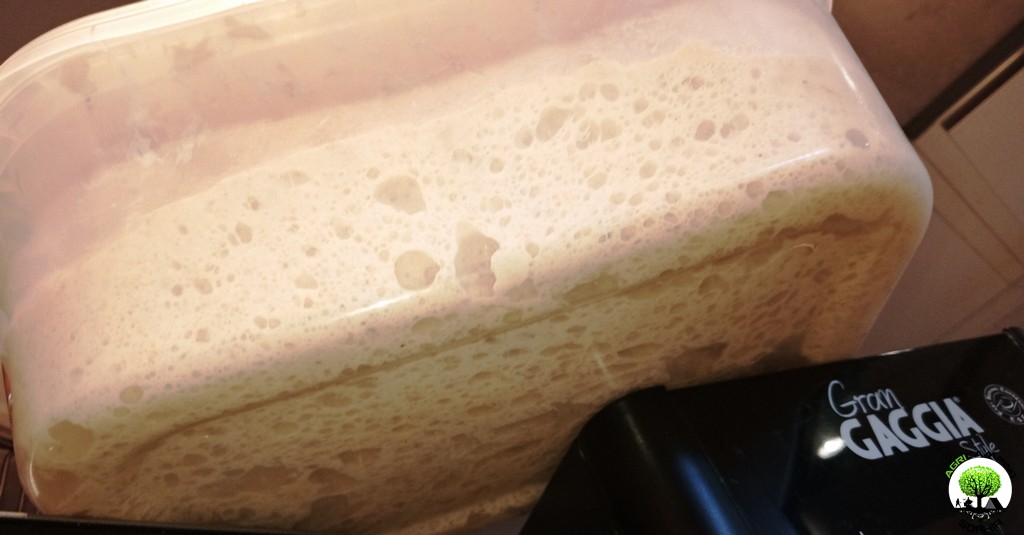 Difference between mother yeast, "criscenti" and beer yeast
Difference between mother yeast, "criscenti" and beer yeast
Saccharomyces cerevisiae not only can naturally already be present in the flour, in the environment and in the operator's own hands but is present on the surface of many fruits including, in particular, grapes. The idea of ??stimulating the fermentation of the dough through fruit or bran increases the possibility of increasing its presence. In other words, only in a totally and permanently aseptic environment, through a careful selection of ingredients and the triggering of a specific yeast culture, could it be possible to completely exclude saccharomyces cerevisiae from the mother yeast. In mother yeast (or natural yeast or sourdough) both lactic and alcoholic fermentation takes place
and not exclusively lactic fermentation as mistakenly led to believe to distinguish it from beer yeast. In the criscenti (or carry-over paste), a higher presence of saccharomyces cerevisiae than the sourdough, i.e. immediately after it has been specifically inoculated, is conceivable. However, since the criscenti is also composed of water and flour, the presence of lactobacilli is physiological . Already from the first refreshment which, as we said, is nothing more than the addition of nutrients, that is water and flour, the microbial flora of the mother yeast is distorted . It follows that no mother yeast can be considered the same as another, although made with the same ingredients, at the same exact moment but in different environments. It follows that potentially, after for example a month, the original balance between species of fungi and bacteria can be radically distorted and that new species may have been brought in by the refreshments. Therefore, what objective parameter should we refer to in order to distinguish sourdough from "criscenti"? The only certainty is that the acidic environment reduces the possibility of contamination by non-acidophilic fungal and bacterial species, that is, most of the species pathogenic to humans.
Neither the mother yeast nor the criscenti are isolated and isolable systems . Talking about the longevity of a mother yeast is a logical nonsense since the entire "population" of bacteria and yeasts changes almost completely within a couple of months.
Another goes for the
fresh beer yeast which is nothing more than a colony of saccharomyces cerevisiae, generated by the fermentation of the
molasses (liquid obtained by centrifuging the sugar beet) with barley malt. The difference between fresh brewer's yeast and dried brewer's yeast is that in the latter the enzymes (in a nutshell, the substances that allow the yeasts to proceed metabolically by fermentation, therefore to let the dough rise) are reactivated only at contact with water.
Final thoughts
In order to obtain a good dough, it is essential to keep in mind that its
maturation (which we informally distinguish from the
leavening since the latter would strictly concern the exclusive action of the yeasts) relates to the metabolic processes of yeasts and bacteria: the imbalance of their action leads to dough defects which are most of the time irreversible. For example, adding a few grams of fresh brewer's yeast in a kilo of dough (instead of a whole dough) leaves space and time for the bacterial action, which we have seen to be equally important. Clearly, it will not be possible to knead in the late afternoon and bake in the same evening ... It is also true that the much advertised
long leavening can also be synonymous with products so one should wonder if it is worth turning on the oven ... complete synthesis of sugars involves first of all the failure of the Maillard reaction as well as compromising the flavor of the dough. In addition, the hyper-synthesis of proteins can, as already mentioned, weaken the strength and elasticity of the glutin mesh, which is essential for the development of the alveolation. I conclude by emphasizing that the honeycomb is not a mere stylistic or aesthetic choice but optimizes the heat diffusion in the dough during cooking, so that starch gelatinization takes place in the necessarily short time to obtain a good product.
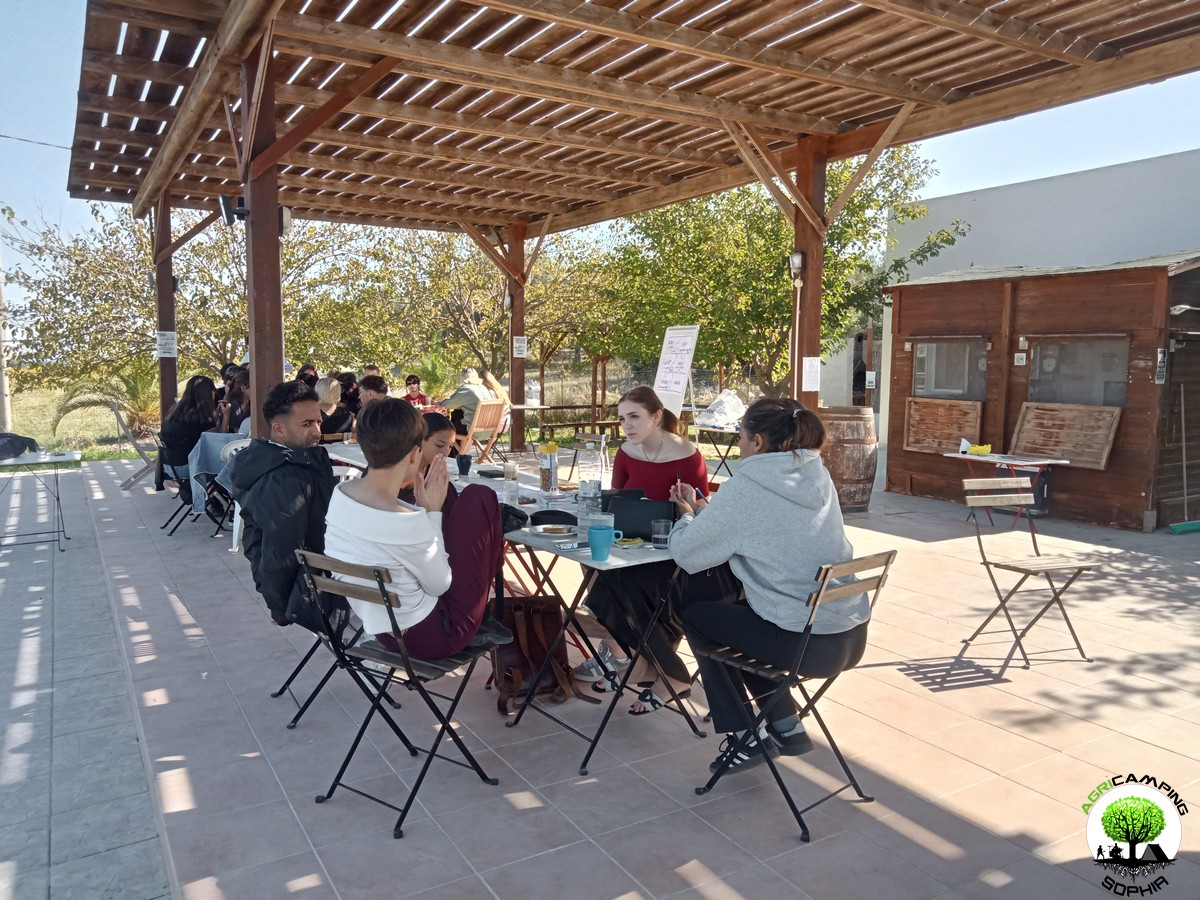 DO YOU WANT TO ORGANIZE AN ERASMUS AT AGRICAMPING SOPHIA?
DO YOU WANT TO ORGANIZE AN ERASMUS AT AGRICAMPING SOPHIA?
WHAT IS AGRICAMPING SOPHIA?
It is a campsite with tent pitches, glamping tents, mobile homes and bungalows
WHERE IS IT?
In Italy, in Sicily, near Syracuse, in Pachino: 36.736883, 15.095610
HOW TO CONTACT US?
info@agricampingsophia.it
(SPEAK ENGLISH) +39 3473079242 – (ONLY SPEAK ITALIAN) +39 3452396095
WHAT DO WE OFFER?
We offer hospitality and catering for Erasmus projects
FOR HOW MANY PEOPLE?
We can have 4-7 single beds in the Socrate Bungalow, 6-10 single beds in the Platone Mobile Homes, 4-6 single beds in the Aristotele Mobile Homes, 4 single beds in the Iblone Mobile Homes, 4 single beds in the single beds in the Empedocle Glamping Tents. In total we therefore have 18 comfortable single places or 31 single places with a fair spirit of adaptation.
IN WHICH PERIOD CAN AGRICAMPING SOPHIA BE AVAILABLE?
The most suitable periods to use our services...
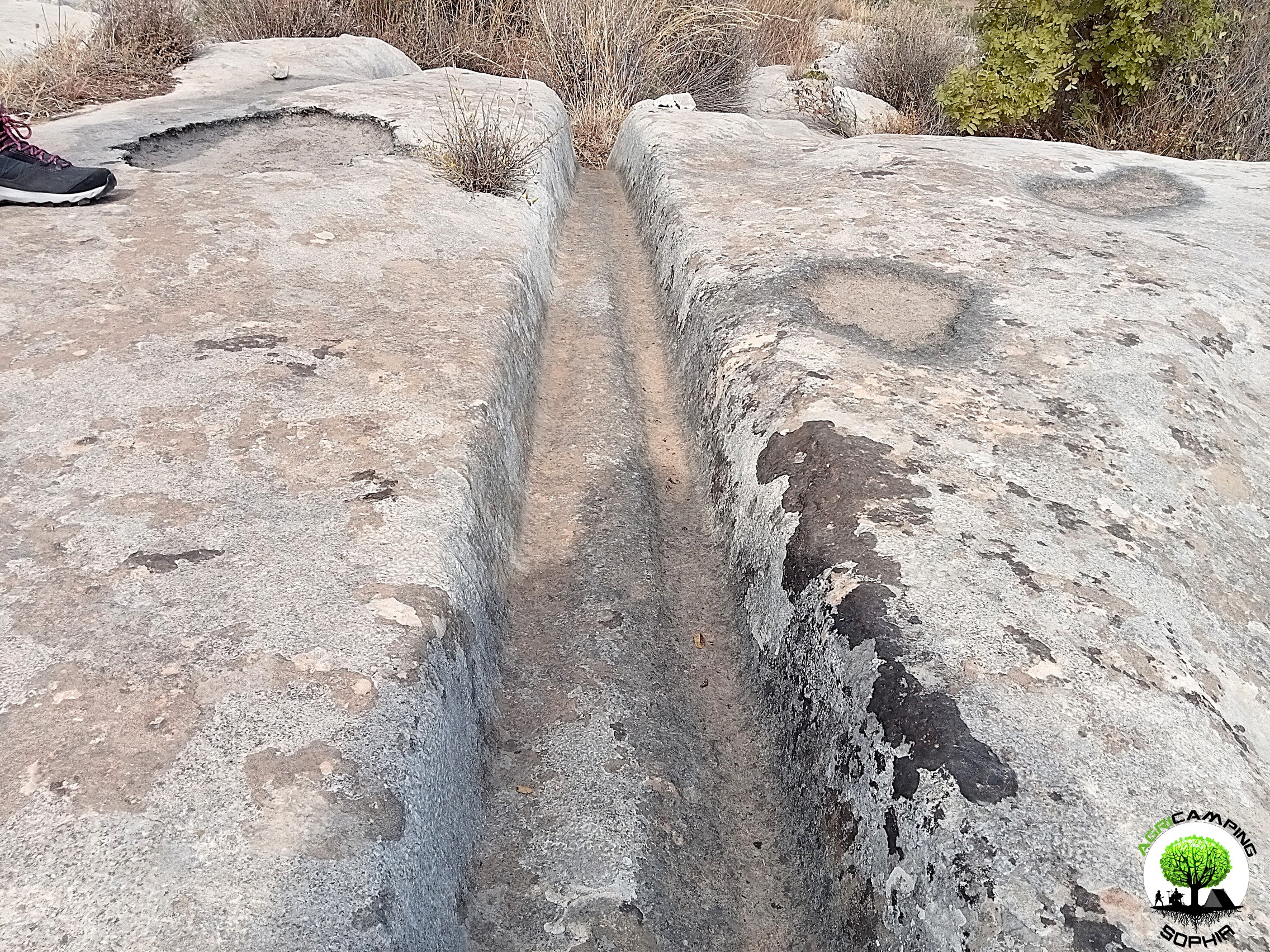 CART RUTS MODELED ON SOFT ROCK?
CART RUTS MODELED ON SOFT ROCK?
Read also RACK OR HOUSING FOR CLOGS?
Some cart ruts from the Targia district, in Syracuse, and most of the cart ruts from Granatari Vecchi, in Rosolini, give the impression of having been impressed, modelled, on a rock that was originally viscous, not entirely solid. As absurd as this hypothesis may seem, especially in Granatari Vecchi, the softness of the shapes and the at least anomalous uniformity of the rock bank, as if it were a concrete casting, which hosts the cart ruts, is unicum compared to the lithic context in the area.
In Targia this phenomenon is less impressive but if we consider the cart ruts essentially cart tracks, therefore furrowed roads indirectly resulting from the repeated passage of carts along the same route, we do not understand why such uniformity and smoothness is present, in the majority of cases, also on the parts not affected by the passage of the...
 RACK OR HOUSING FOR CLOGS?
RACK OR HOUSING FOR CLOGS?
Read also CART RUTS CUT FROM QUARRIES
In the presence of slopes, even slight ones, in some cart ruts in the Targia district, in Syracuse, central holes are found with a diameter of between 30 and 50 centimeters and a depth of 15-20 centimeters, spaced about 50 centimeters apart. Neither the position (they are not exactly in the center of the cart ruts and perfectly aligned with each other), nor the shape appear perfectly regular: either the passage of time and any wear have profoundly modified their original shape or, simply, they have never had a systematic regularity. However, the offset in position between one hole and another is never completely “off-axis”: there is always a portion about twenty centimeters wide that coincides with the same portion of the previous and subsequent hole. The best preserved and most defined holes are found in the cart ruts usually called Scala...
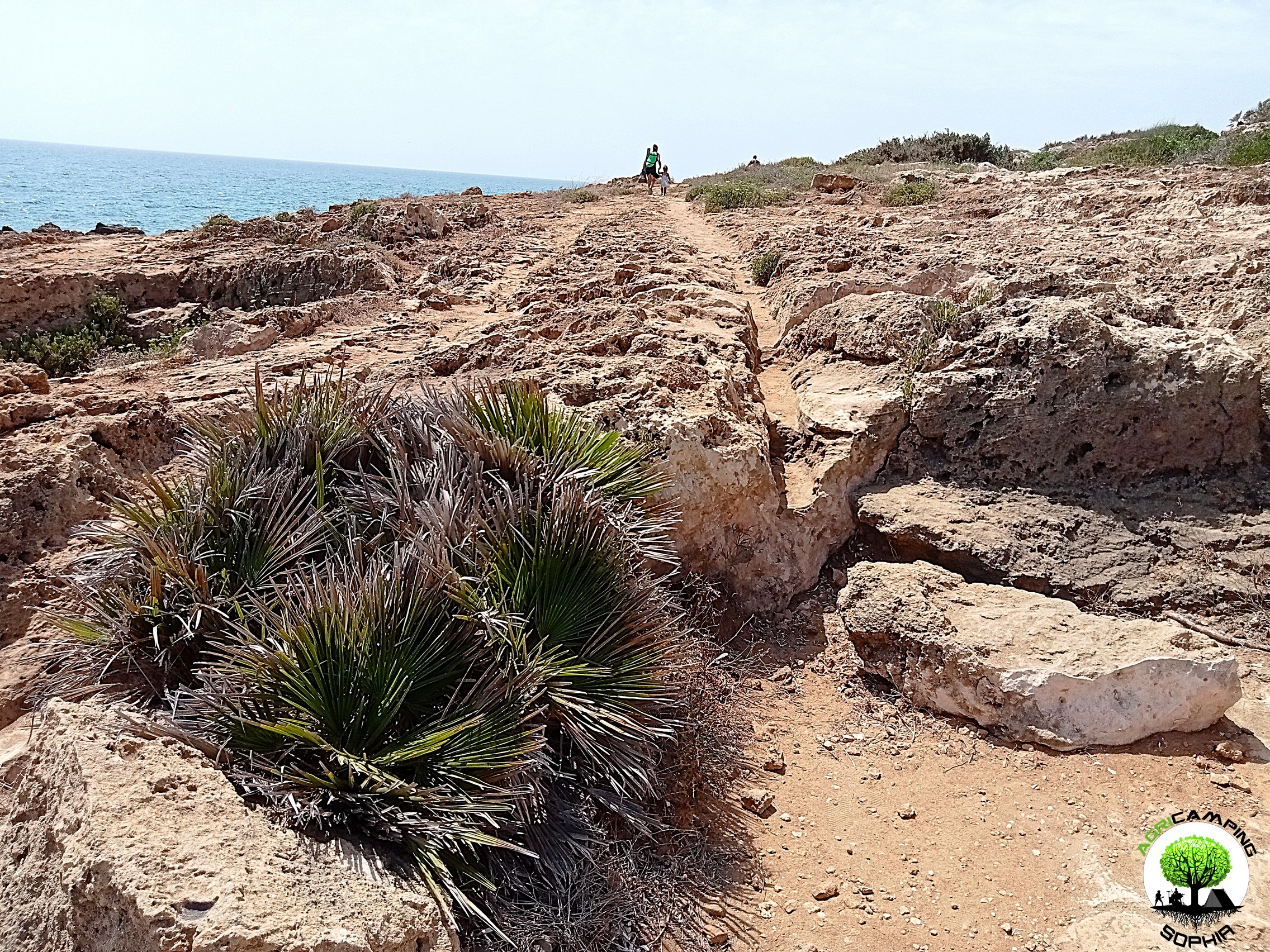 CART RUTS CUT FROM QUARRIES
CART RUTS CUT FROM QUARRIES
Back to CART RUTS AND A FEW TOO MANY PROJECTIONS
I will skip any preamble, referring to what has already been written regarding the presence of cart ruts in south-eastern Sicily.
The easy academic tendency has been, in most cases concerning cart ruts, to consider them in terms of the latomie, or quarries, with which very often (for example in the cases of the Targia or Pizzuta districts) they share the same territory.
According to this theory, the carraie would have been indirectly created due to the wear of the rock at each passage of carts or sleds loaded with extracted stone blocks. I will not repeat the arguments presented so far in order to demonstrate that this is a theory that has little solid foundations on an in-depth analysis of the cart ruts. However, I will add a piece by demonstrating the implausibility of a connection between them in both chronological and functional...
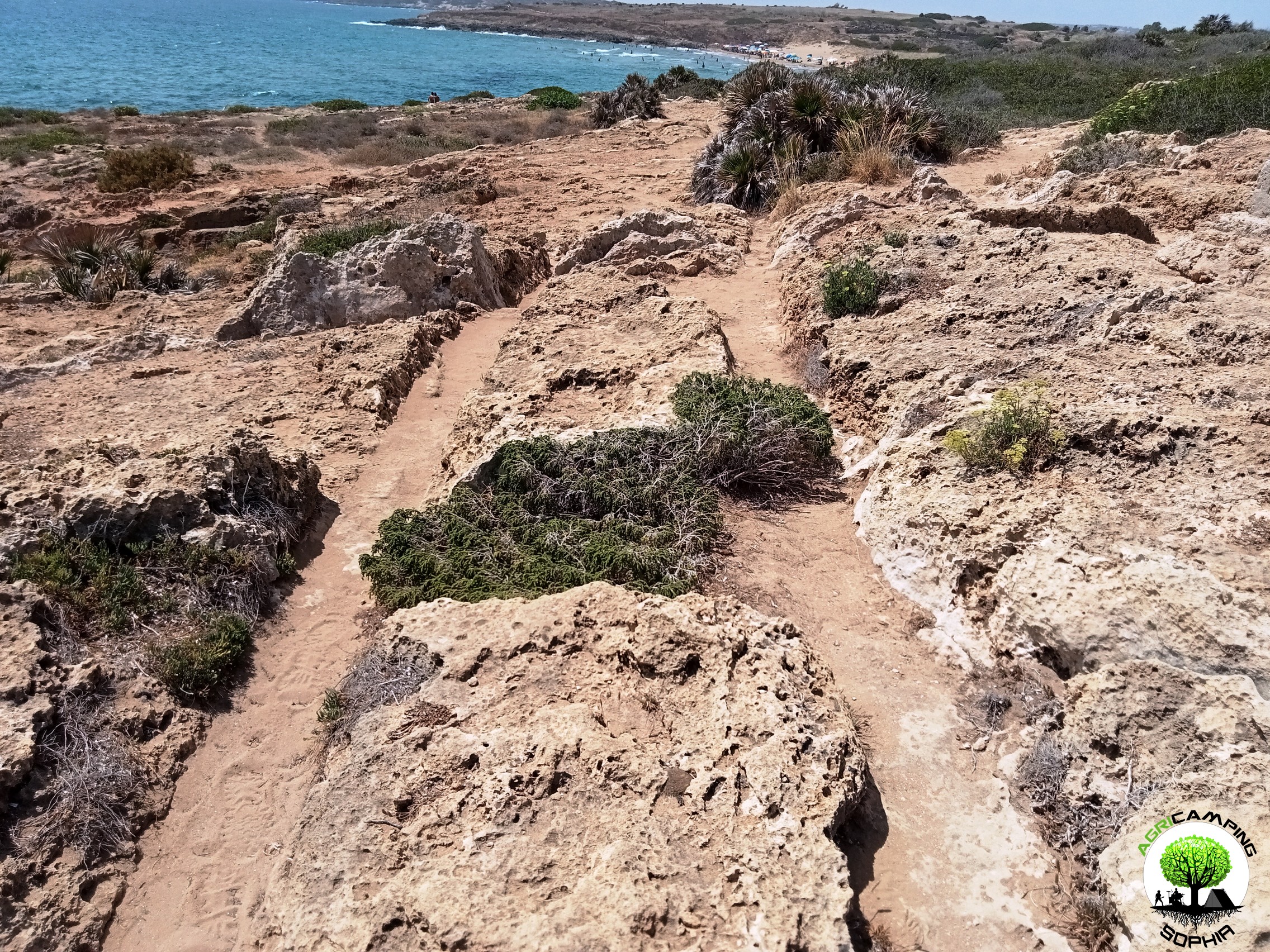 CART RUTS AND A FEW TOO MANY PROJECTIONS
CART RUTS AND A FEW TOO MANY PROJECTIONS
Read also THE POLISHING OF THE CART RUTS
I will skip any preamble, referring to to what has already been written regarding the presence of cart ruts in south-eastern Sicily.Considering the possibility that the cart ruts were gradually dug by the passage of carts pulled by pack animals, for example pairs of oxen, observing certain sections of the cart ruts present in the Granatari Vecchi district, in Rosolini, and in the Pizzuta district, close to the Vendicari Reserve, two questions arise:
1. Why force the animals to pass over rough surfaces and protrusions high, compared to the base of the furrows, even 60-70 centimeters?
2. Why, in the presence of such obstacles, not opt for a detour?
For Mottershead, Pearson and Schaefer such protrusions appeared later, since at the time of the passage of the wagons, a layer of earth covered the rocky bank, thus not making the obstacle...
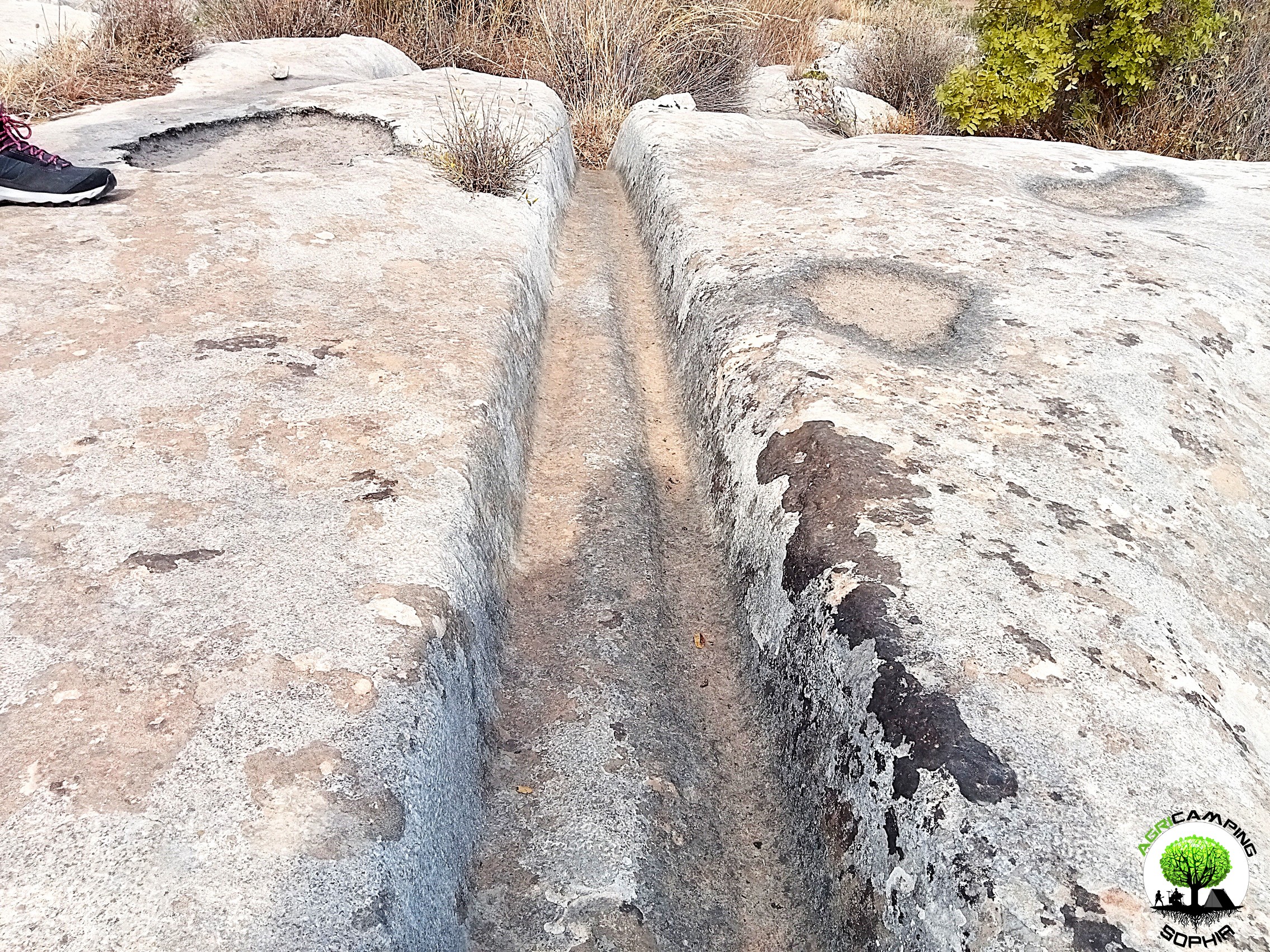 THE POLISHING OF THE CART RUTS
THE POLISHING OF THE CART RUTS
Read also THE PROBLEMATIC EDGES OF THE CART RUTS
I will skip any preamble, referring to to what has already been written regarding the presence of cart ruts in south-eastern Sicily.
To proceed with this comparison I have chosen a probable capital and the corner of a recess present in a block of the northern walls of Eloro that would seem to resemble a pinax, that is, a niche that would have housed a fresco of the heroa, but which a more careful observation refers to a system functional to the grip of the block through a pincer winch. Both elements, like the curt ruts, have remained at the mercy of the elements for millennia, and are therefore subject to comparable wear and tear due to the passage of time. The finishing of the capital should be of a high standard, since it is an architectural element that also has an aesthetic function. The recess, on the other hand, should have...
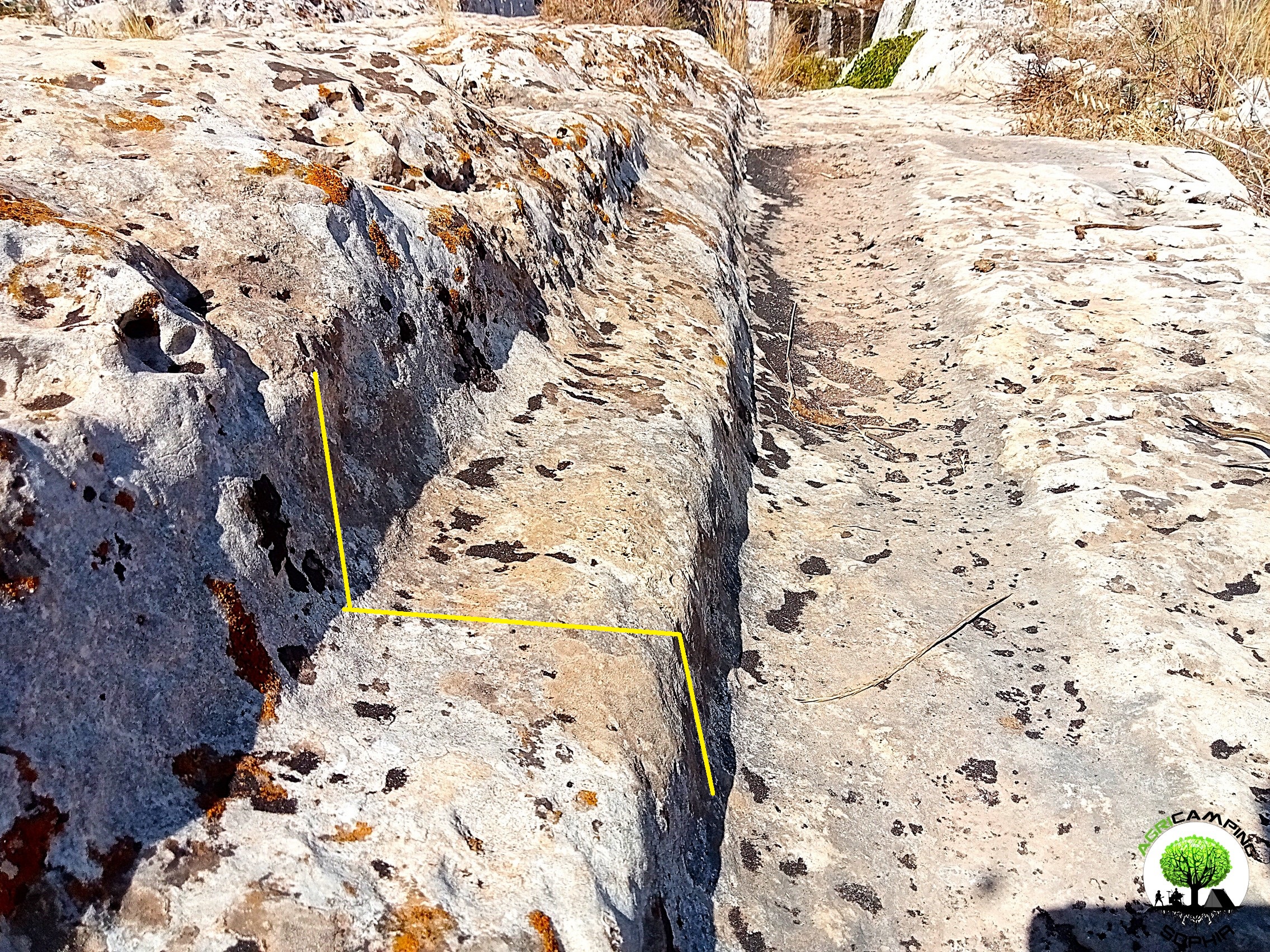 THE PROBLEMATIC EDGES OF THE CART RUTS
THE PROBLEMATIC EDGES OF THE CART RUTS
I will skip any preamble, referring to to what has already been written regarding the presence of cart ruts in south-eastern Sicily.As can be seen in other sites around the world, in some cart ruts I visited, in particular in the Cugni district in Pachino, in the Granati Vecchi district in Rosolini and in the Targia district in Syracuse, a clear border can be seen, a sort of frame, next to the grooves, more marked externally, barely noticeable internally.
The borders I measured have a width of 14-20 centimeters and a height of 8-10 centimeters.
Not all cart ruts have such frames present or particularly evident, regardless of the degree of wear or degradation. They are found above all in cart ruts with less deep grooves.
As already described in detail, given the presence of furrows with a depth of even 65-70 centimeters, the wheels of a possible vehicle would have had to have a...
 THE PROBLEM OF CART RUTS IN SOUTH-EASTERN SICILY (PART FOUR)
THE PROBLEM OF CART RUTS IN SOUTH-EASTERN SICILY (PART FOUR)
Click here to return to third part
Clapham Junction
As in the Maltese site Misrah Ghar Il-Kbir, also in the Targia and Granatari Vecchi districts the cart ruts intersect and cross each other in a similar way to the track switches in a railway station. The nickname Clapham Junction that was given by David H. Trump to the Maltese site, derives precisely from the similarity with the famous English railway station. For Sagona these are agricultural furrows and water channels, for Mottershead, Pearson and Schaefer these are abandoned paths due to obstacles and wear. Obviously we do not know what the morphology of the Syracuse and Rosolini territory was at times when the cart ruts were traced, but considering the current context, there certainly would have been no agricultural reason to build them, given the presence of fertile land, springs and fresh water courses just a few kilometers...


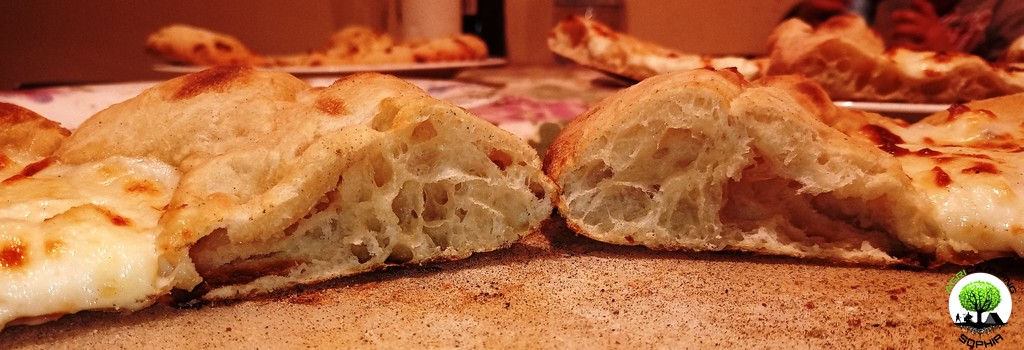



 DO YOU WANT TO ORGANIZE AN ERASMUS AT AGRICAMPING SOPHIA?
DO YOU WANT TO ORGANIZE AN ERASMUS AT AGRICAMPING SOPHIA? CART RUTS MODELED ON SOFT ROCK?
CART RUTS MODELED ON SOFT ROCK? RACK OR HOUSING FOR CLOGS?
RACK OR HOUSING FOR CLOGS? CART RUTS CUT FROM QUARRIES
CART RUTS CUT FROM QUARRIES CART RUTS AND A FEW TOO MANY PROJECTIONS
CART RUTS AND A FEW TOO MANY PROJECTIONS THE POLISHING OF THE CART RUTS
THE POLISHING OF THE CART RUTS THE PROBLEMATIC EDGES OF THE CART RUTS
THE PROBLEMATIC EDGES OF THE CART RUTS THE PROBLEM OF CART RUTS IN SOUTH-EASTERN SICILY (PART FOUR)
THE PROBLEM OF CART RUTS IN SOUTH-EASTERN SICILY (PART FOUR)